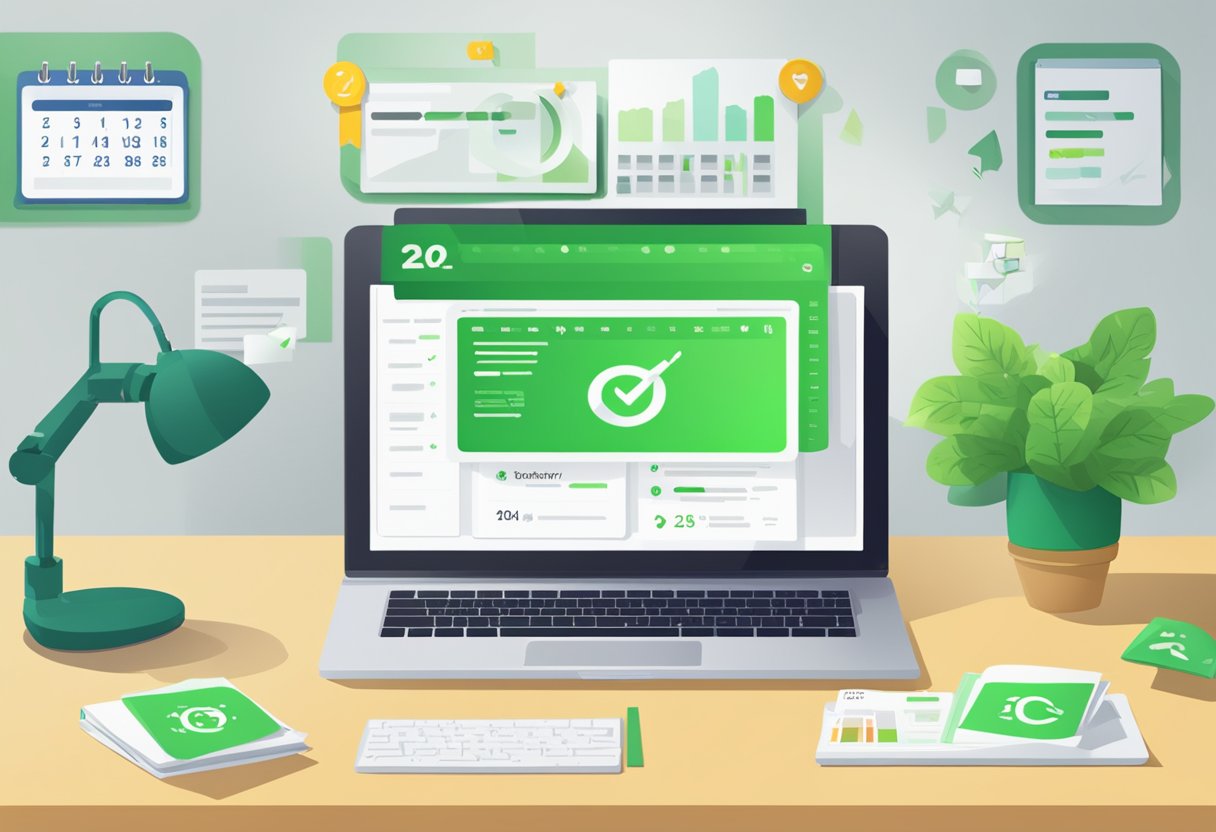The New Email Deliverability Rules for 2024: Navigating Changes for Marketers
Email deliverability has become increasingly complex, with numerous factors influencing whether your message lands in the inbox or gets trapped in the spam filter. In 2024, it is essential to understand the new rules that govern email deliverability to ensure your communications reach their intended audience. These rules aren’t just technical requirements; they’re a blend of best practices that help maintain your sender reputation and engagement levels. Your understanding of these principles is pivotal in crafting an email strategy that aligns with the industry’s evolving standards.
To stay on top of your email game, you need to be aware of several key elements that play a role in deliverability. Authentication protocols like SPF, DKIM, and DMARC are no longer optional—they’re necessary tools in your arsenal to verify your identity as a sender and protect your emails against spoofing. Alongside technical setup, the content of your emails and how your audience interacts with them significantly affect deliverability rates. Maintaining clean mailing lists, segmenting your audience, and personalizing content are now recognized as industry standard practices, rather than simply advantageous techniques.
Taking into account these aspects of email deliverability not only helps in avoiding the dreaded spam folder but also enhances the overall effectiveness of your email campaigns. By implementing these best practices, you can ensure a higher rate of emails reaching their destination and, consequently, a better chance of achieving your marketing goals. Stay informed, adapt your strategies, and watch your email success grow in 2024 and beyond.
Understanding Email Deliverability in 2024

In 2024, email deliverability hinges on your ability to understand its key concepts and the elements that influence your sender reputation. Strategies and rules have evolved to prioritize the user’s inbox experience.
Key Terms and Concepts
Deliverability refers to the ability of your emails to reach the recipient’s inbox without being flagged as spam or bouncing back. Here’s a brief overview:
- Inbox Placement Rate: The percentage of emails sent that land in the recipient’s main inbox, not spam or junk folders.
- Spam Rate: The frequency at which your emails are marked as spam by recipients.
- Bounce Rate: The percentage of your sent emails that could not be delivered to the recipient’s address.
Understanding these terms is crucial for improving your email marketing campaigns.
Importance of Deliverability
Deliverability is pivotal for the success of your email marketing. If your emails consistently land in the spam folder or bounce, your engagement rates could plummet, negatively affecting your campaigns’ ROI.
Sender Reputation Factors
Your sender reputation is a score that Internet Service Providers (ISP) assign to your domain based on various metrics. The key factors include:
- Sending Volume: How many emails you send within a period. Sudden spikes can raise flags.
- Engagement Rates: How recipients interact with your emails, including opens and clicks.
- Complaint Rates: How often recipients mark your emails as spam.
- Spam Trap Hits: If your emails are reaching email addresses created solely to catch spammers.
Maintaining a healthy sender reputation is imperative to ensure high deliverability rates.
Email Authentication Mechanisms

Email authentication mechanisms are technical standards that improve email security by verifying sender identity. These mechanisms help protect against phishing, spoofing, and spam.
SPF Explained
Sender Policy Framework (SPF) allows you to verify if incoming mail from a domain comes from an authorized IP address.
- Key Features:
- Validation: Defines which IP addresses are permitted to send email from your domain.
- Implementation: Published in DNS as a TXT record.
- Limitation: Doesn’t validate the message header used in email clients; only envelope-from (return-path).
DKIM and Digital Signatures
DomainKeys Identified Mail (DKIM) provides a method for validating a domain name identity associated with a message through cryptographic authentication.
- Digital Signature: Email includes a secure DKIM signature header.
- Public Key: Published in the domain’s DNS records for recipient verification.
- Function: Helps receivers determine if the email was altered in transit.
DMARC Policies
Domain-based Message Authentication, Reporting & Conformance (DMARC) builds on SPF and DKIM protocols, enabling you to publish policies that specify how email from your domain should be handled if it doesn’t pass authentication checks.
- Policy Statements:
p=none– No specific action taken on failure.p=quarantine– Treat with suspicion.p=reject– Block outright.
- Reporting: Provides feedback on emails that pass and fail DMARC evaluation.
- Alignment: Ensures that the domain in the From header matches the domains validated by SPF and/or DKIM.
Combatting Email Threats

In 2024, your vigilance against email threats is critical for safeguarding your information. Understanding the latest tactics and protective measures will help you maintain robust email security.
Phishing and Spoofing Tactics
Phishing and spoofing are prevalent tactics that trick you into revealing sensitive information or accessing compromised websites. Be aware of these specific strategies:
- Phishing: A method where you receive emails that appear to be from reputable sources, but are designed to steal your personal data. Always verify the sender’s email address and look for any signs of suspicious phrasing or requests in the email content.
- Email Spoofing: Attackers falsify the sender’s address to make their messages seem credible. To combat this, verify unexpected requests for information or money by contacting the supposed sender through a different channel.
Protecting Against Malware
Malware can infiltrate your system through email attachments or compromised links. Follow these guidelines to protect your digital environment:
- Attachments: Be cautious when opening email attachments, even from known senders. Scan all downloads with antivirus software before opening.
- Links: Avoid clicking on links in unsolicited emails. Hover over links to preview the URL and ensure it’s associated with a legitimate website.
- Regulations Compliance: Adhere to email regulations such as the use of authenticated protocols like DMARC, SPF, and DKIM to help detect and prevent email spoofing.
Email Provider Requirements
Email providers, including Gmail and Yahoo, have updated their deliverability rules to enhance security and user experience. You should familiarize yourself with these modifications to ensure your emails reach their intended inboxes.
Gmail’s Deliverability Rules
Gmail has implemented strict regulations to combat spam and fraudulent activities:
- Authentication Protocols: You must utilize SPF, DKIM, and DMARC authentication methods to improve email deliverability. Failure to comply could result in your emails being flagged as spam.
- User Engagement: Email engagement rates now have a greater impact on deliverability. Your emails should be engaging to prevent being deprioritized by Gmail’s algorithms.
| Aspect | Requirement | Impact on Deliverability |
|---|---|---|
| Authentication | SPF, DKIM, DMARC required | Essential for inbox placement |
| Engagement | High rates desired | Directly affects prioritization |
Yahoo and Other Providers’ Standards
Yahoo and other mailbox providers like Outlook have adopted similar rules, with specific differences:
- Content Scrutiny: Emails must contain high-quality content and adhere to Yahoo’s content policies. Low-quality or inconsistent content can result in email rejection.
- Sending Reputation: Your sender reputation is increasingly important. Maintain a healthy email sending frequency and avoid large email blasts to unrecognized recipients.
| Provider | Content Policy Compliance | Sender Reputation |
|---|---|---|
| Yahoo | Mandatory | Heavily Influences Deliverability |
| Other Providers | Required | Critical for Email Acceptance |
Best Practices for Senders

To ensure your emails reach their intended recipients in 2024, focus on cultivating a robust sender reputation and providing clear subscription management options.
Improving Sender Reputation
- Monitor Your Metrics Regularly: Keep a close eye on your delivery rates, open rates, and the number of spam complaints. These metrics directly impact your sending reputation.
- Authenticate Your Emails: Use protocols like SPF, DKIM, and DMARC to authenticate your emails. This will help receivers verify that your emails are legitimate and not phishing attempts.
- Regularly Clean Your Email List: Remove non-responsive or inactive email addresses. A list with a high engagement rate improves your reputation.
- Consistent Sending Volume: Maintain a consistent volume of emails. Sudden spikes can trigger alarms and damage your reputation.
- Content Relevance: Send content that is relevant and valuable to your subscribers. High engagement with your emails positively affects your reputation.
Managing Subscription Options
- Easy Unsubscribe Options: Include a visible, one-click unsubscribe link in every email. Making it easy to unsubscribe helps avoid spam complaints and maintains a healthier list.
- Transparent Subscription Process: Clearly communicate what subscribers are signing up for. Avoid using deceiving subject lines or content.
- Preference Management: Allow subscribers to manage their email preferences. This includes frequency, type of emails, and topics they are interested in.
- Honor Unsubscribe Requests Promptly: When a user chooses to unsubscribe, action their request immediately. Delayed processing can lead to spam reports and hurt your sending reputation.
New Policies and Industry Standards

In 2024, strict adherence to new email deliverability rules is essential for maintaining your sender reputation and ensuring your messages reach their intended recipients. With the implementation of these updated standards, you must acquaint yourself with mandatory deadlines and authentication protocols.
Deadline for Compliance
June 30, 2024, marks the crucial deadline for all email service providers and marketers to comply with the new deliverability rules. Post this date, non-compliant emails may face higher bounce rates or be flagged as spam.
- Action Required: Review and adjust your email policies and practices.
- Penalties: Non-compliance may result in decreased deliverability and potential blacklisting.
Updated Authentication Requirements
The introduction of advanced authentication requirements is a significant change, focusing on the validation of sender identity to combat phishing and spam.
- Digital Signature: Emails must include a digital signature aligning with the Domain-based Message Authentication, Reporting, and Conformance (DMARC) standards.
- Authentication Protocols: Senders are expected to implement Sender Policy Framework (SPF) and DomainKeys Identified Mail (DKIM) for all outbound emails.
| Requirement | Description | Implementation Tip |
|---|---|---|
| SPF Record | Valid SPF record must be published in your DNS. | Ensure your SPF record doesn’t exceed the 10-lookup limit. |
| DKIM Signature | Emails must contain a valid DKIM signature. | Regularly rotate your DKIM keys for enhanced security. |
| DMARC Policy | Establish a DMARC policy for message validation. | Use a ‘reject’ policy for unauthenticated mails. |
Adhering to these requirements is no longer optional but a mandatory industry standard to enhance email security and deliverability. Ensure all email campaigns are updated to meet these new guidelines promptly.
Practical Email Delivery Tips

To ensure your email marketing campaigns reach your audience’s inbox, you must focus on optimizing your campaigns and getting your technical setup right.
Optimizing Email Campaigns
Segment your audience: Tailor your emails to groups within your target audience based on their interests and behavior. Use analytics to track opens, clicks, and conversions, then adjust your strategy.
Craft compelling content: Write engaging subject lines and body content. Keep it relevant, and personalize where possible. Use A/B testing to determine what works best for different segments.
Technical Setup for Deliverability
PTR Records and RDNS: Ensure your IP has a proper Pointer (PTR) record that matches your Reverse DNS (RDNS) lookup. This validates your sending IP and can improve your reputation with ISPs.
Custom DKIM Setup: Implement DomainKeys Identified Mail (DKIM) to add a digital signature to your emails. This helps verify your identity and protects against email spoofing. A custom DKIM gives you control over your authentication process.
By applying these direct strategies, your email delivery should effectively improve, keeping you compliant with the new deliverability rules of 2024.
Frequently Asked Questions

The FAQ section addresses key topics regarding the email deliverability rules set for 2024, providing you with precise guidance on compliance, strategic changes due to Gmail’s policy updates, and understanding the new legislative requirements.
What best practices should be adopted to comply with the 2024 email deliverability regulations?
To comply with the 2024 email deliverability regulations, you should ensure explicit consent for subscriptions, maintain regular list hygiene to remove inactive subscribers, and utilize email authentication protocols like DMARC, DKIM, and SPF to safeguard sender reputation.
How has Google’s update to Gmail policies in 2024 affected email marketing strategies?
Google’s Gmail policy update in 2024 has led to tighter filters for user consent and engagement. Your email marketing strategies should now focus more on personalized content, interactive elements that promote engagement, and adherence to stricter consent practices to maintain visibility in users’ inboxes.
What critical steps must businesses take to adapt to the email legislation introduced in February 2024?
Businesses need to audit their current email practices against the new regulations, update their data handling and storage processes, ensure they have clear records of user consent, and provide easy-to-use opt-out options to fully comply with the email legislation introduced in February 2024.
Can you outline the significant differences between the 2023 and 2024 email compliance requirements?
The 2024 email compliance requirements put greater emphasis on user privacy and consent, imposing stricter rules on data retention and the use of personal information. Unlike the 2023 regulations, senders now must have auditable proof of consent, and penalties for non-compliance are more severe.
What are the consequences of not adhering to the new email deliverability guidelines set for 2024?
If you fail to adhere to the 2024 guidelines, your emails are more likely to be marked as spam, resulting in possible blacklisting. Furthermore, violations of the regulations could lead to substantial fines and legal actions, impacting both your financial and brand reputation.
How should companies modify their email authentication methods to meet the 2024 standards?
Companies should implement enhanced email authentication methods by configuring the latest standards of DMARC, DKIM, and SPF. These changes will help in identity verification, protect against spoofing, and thus improve the deliverability and trustworthiness of their emails.
